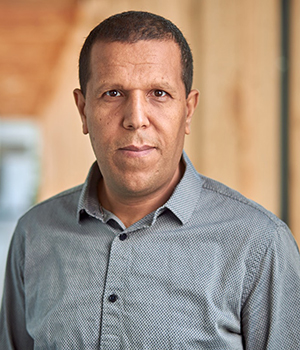Back to program
On the Road to the Autonomous Mine: A Rocky Future!
Tuesday, November 19, 2024
Room 304AB - Société du Plan Nord
Join us for an inspiring morning dedicated to the future of the mining industry with our event “On the Road to the Autonomous Mine: A Rocky Future!” MISA Group shares its vision for the future of the mining industry. The digital transformation of the industry is rich with business opportunities and innovations.
The Autonomous Mine is the concept explored by MISA Group to identify emerging trends for the next decade and to take a strategic position now. Students, professors, IT experts, and equipment manufacturers are invited to discover how digitization and automation are redefining the mining sector. Come learn about the future of mining and the opportunities it holds!
1:30 p.m.
Autonomous Mine: How to Proceed?
1:55 p.m.
Next-Gen Business Intelligence in the Mining Industry
Conference details
This presentation highlights the evolution of information systems in the mining industry and the importance of business intelligence (BI) for improving decision-making. It also showcases innovative solutions like Neuromines and Connex, which enhance process optimization and decision-making through the collection, integration, and analysis of data.
Evolution of Information Systems in the Mining Industry: The presentation begins by tracing the evolution of information systems in the mining sector. It emphasizes the shift from manual, paper-based data collection processes to SCADA systems in the 1970s and 1980s, which enabled automation and real-time monitoring of operations. In the 1990s and 2000s, mining companies adopted ERP systems for better business process integration. However, data fragmentation across different systems remains a significant challenge.
Business Intelligence in the Mining Industry: This section explains how business intelligence helps transform data into actionable insights for more effective decision-making. It covers key trends such as the shift towards data lakes, improved cybersecurity, the growing adoption of cloud computing, the integration of the Internet of Things (IoT), and the rise of artificial intelligence (AI). While these technologies bring new benefits, they also present challenges related to data integration and upskilling of teams.
Neuromines and Connex: Lastly, the presentation introduces Neuromines as an integrated platform for managing mining data, designed to unify and maximize the use of operational data. Connex, on the other hand, is a secure tool that facilitates data management and equipment connectivity in mines.
In conclusion, this presentation highlights major technological advancements in the mining industry and emphasizes how solutions like Neuromines help improve operational performance through advanced data management and analysis.
2:20 p.m.
Concrete applications of AI for autonomous mining
Conference details
Artificial intelligence (AI) has quickly established itself as an essential driver in many industrial sectors. It is at the heart of innovations that improve efficiency, productivity and facilitate decision-making in increasingly complex and unpredictable environments. The mining industry is no exception to this trend, where AI plays a key role in optimizing operations, reducing costs and greenhouse gas emissions, as well as improving safety.
This talk will highlight the transformative potential of AI through two concrete projects:
- Data schema mapping, which allows different data source models to be associated with a unified data model, regardless of how the source data is structured. This significantly simplifies the mapping processes, reducing both manual work and potential errors.
- Optimized planning of vehicle fleets in off-road environments, aimed at reducing costs (maintenance, purchase/rental, operational, environmental) and improving the distribution of vehicles according to changing operational needs.
We will present these projects, explaining why AI has proven to be a suitable avenue for these issues, and will also explore other potential applications based on this work. The goal is to demonstrate how AI is redefining resource management for increased productivity and better environmental sustainability.
3:00 p.m.
Optimal Short-Term and Real-Time Production Planning in Underground Mines
Conference details
The integration of new technologies that facilitate the acquisition, storage and transmission of real-time information in the mining industry, particularly in underground mines, is paving the way for the development of decision-support tools for short-term mine planning and real-time activity management. The development of these new tools presents a number of challenges. How might the variability in activity duration be accommodated within the planning process? What methodologies can be employed to manage and integrate the incoming flow of information? How might the criticality of the observed delays be determined, and how could unforeseen events be managed? To achieve this, we propose two complementary approaches. The first approach, described as proactive, entails the incorporation of uncertainty into short-term planning to develop more resilient work schedules that can accommodate the variation in the duration of mining activities. The second approach, referred to as reactive, involves the modification of the schedule in real time to accommodate unforeseen events or excessive delays. The development of these decision-support tools requires answers to a number of questions: when should we react, how should work schedules be modified, and how can we ensure that the solutions proposed or implemented in real time are optimal?
3:25 p.m.
Optimizing the Traceability of GHG Emissions in the Mining Sector Using Blockchain Technology
Conference details
This research explores the opportunity to adopt cutting-edge technologies, such as blockchain, to trace and quantify greenhouse gas emissions in the mining industry. Through a case study, we analyze how blockchain enables end-to-end emissions traceability throughout the supply chain, thus reducing the risks of fraud and double counting. The results also demonstrate a notable improvement in transparency and efficiency in the automation of environmental audits, thereby promoting more responsible emissions management in this sector.
3:50 p.m.
Stability and Reliability of Mine Ventilation: Towards Innovative Digital Solutions
Conference details
For several decades, axial fan technology in the mining context has proved its worth in terms of energy efficiency and aerodynamic performance. However, it must now meet the growing ventilation needs of underground mines, as well as the new performance, health, safety, and Demand Controlled Ventilation (DCV) targets, which require air flows and quality in confined spaces subject to strict guidelines. These guidelines are a major constraint when energy costs are high and the ambient air is contaminated by toxic gases resulting from mining activities. Axial fan technology must now meet evolving standards in terms of reliability and occupational health, especially as these devices are subject to various failure modes mainly associated with vibration, fatigue, stall conditions and excessive mechanical stress.
Technical and economic studies must therefore be carried out to optimise the aerodynamic and mechanical performance of the fan hub/blade system. In particular, the aim is to develop solutions for optimizing the design of hubs and blade attachment systems. Another key solution is to design and build an AMCA certified test bed to validate fan performance before delivery. However, structural and aerodynamic instabilities within the rotating hub/blade system make this validation difficult.
The aim of our work is to obtain a balanced distribution of materials and refined geometric profiles to improve aerodynamic performance, using a digital twin, fluid-structure interaction and 4.0 instrumentation. This approach has made it possible to predict the major instabilities of the system that lead to excessive vibrations and premature wear in the contact zones between the hub, shaft and blades. In addition, the optimization of the aerodynamic profile of the blades and the structural optimization of its root, where the concentration of stresses is highest, have significantly reduced fatigue failures, particularly in stall conditions. In addition, the structural optimization of the hub has simplified the production process by eliminating several costly steps after the casting of this part, thus reducing the quantity of raw material needed and resulting in a lighter, more economical design. Finally, the work carried out offers greater energy efficiency and cost-effectiveness, while ensuring compliance with standards and the reliability of axial technology ventilation systems.
4:15 p.m.
End of the session






